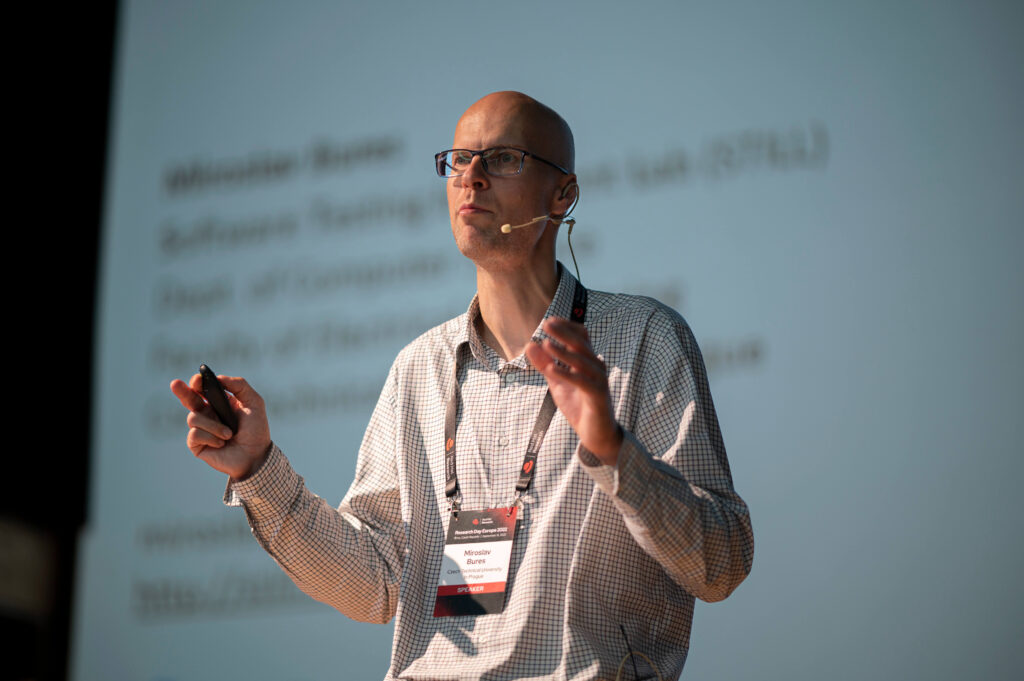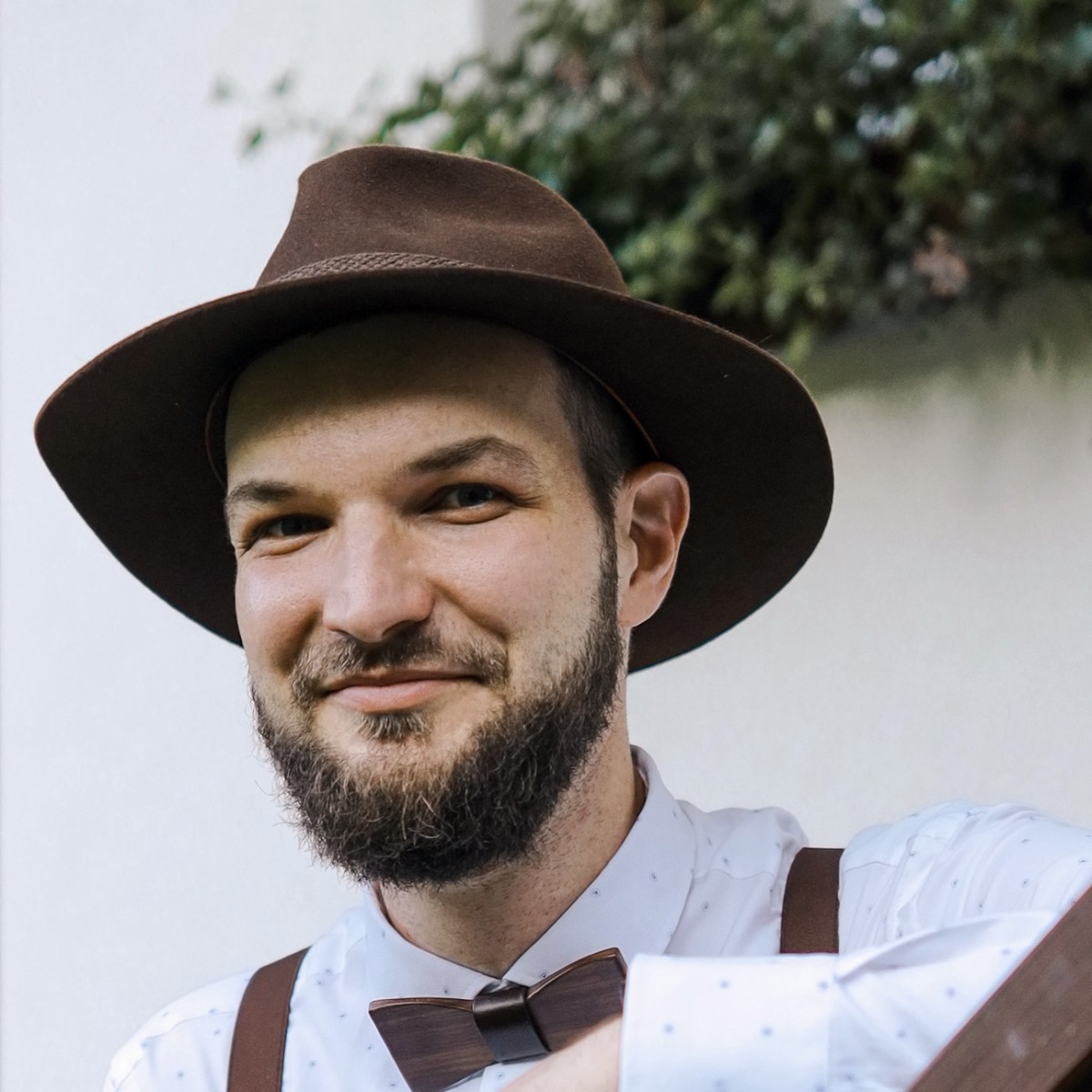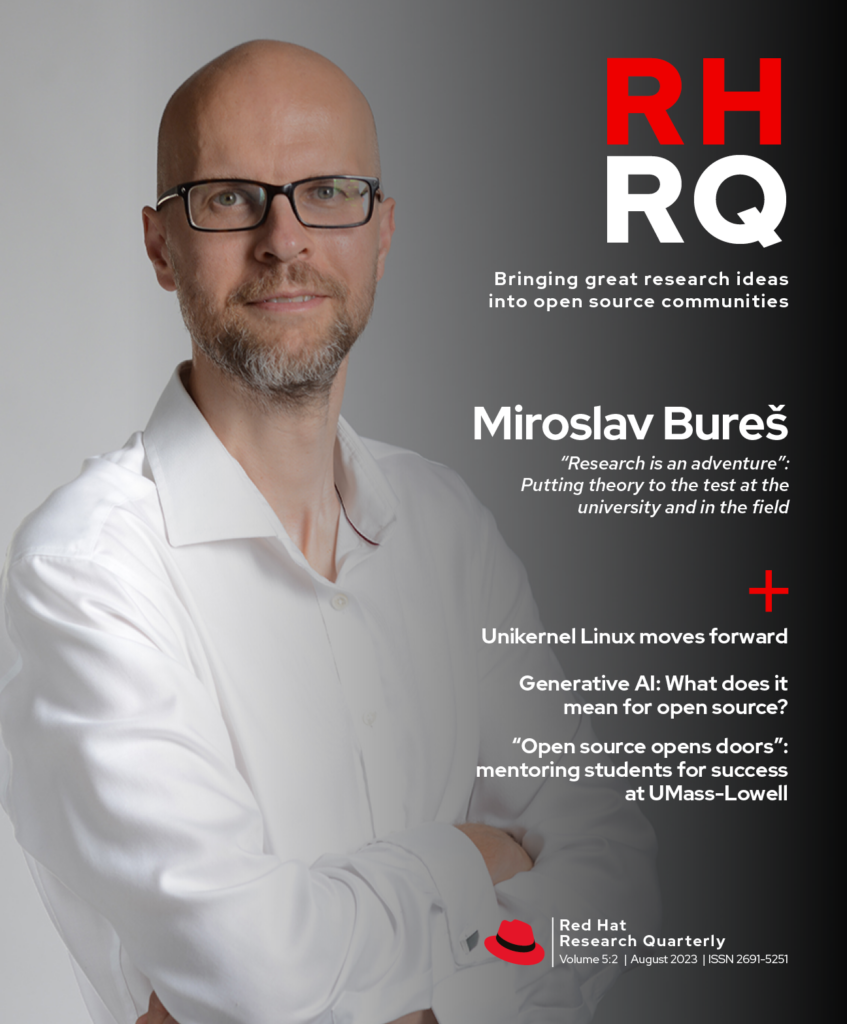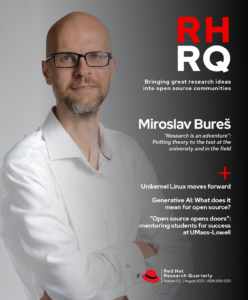
Red Hat Research Quarterly
“Research is an adventure”: Putting theory to the test at the university and in the field

Red Hat Research Quarterly
“Research is an adventure”: Putting theory to the test at the university and in the field
Don’t tell engineering professor Miroslav Bureš that software testing can’t be exciting. As the System Testing IntelLigent Lab (STILL) lead at Czech Technical University in Prague (CTU), Bureš’s work bridges the gap between abstract mathematics and mission-critical healthcare and defense systems. His research focuses on system testing and test automation methods to give people new […]
Article featured in
Don’t tell engineering professor Miroslav Bureš that software testing can’t be exciting. As the System Testing IntelLigent Lab (STILL) lead at Czech Technical University in Prague (CTU), Bureš’s work bridges the gap between abstract mathematics and mission-critical healthcare and defense systems. His research focuses on system testing and test automation methods to give people new tools to detect relevant defects more quickly and cheaply than they can today. He is interested in using IoT technology and artificial intelligence in systems that can help first responders in general and military medicine. Using sensor networks, electronic devices, and augmented reality, these systems can make first responders’ work faster, more effective, and less risky.
RHRQ asked Martin Ukrop, Senior Research Program Manager based in Brno, CZ, to speak with Bureš about his interest in testing, connecting university research with industry needs, and building systems to save lives. Ukrop is a security specialist who facilitates industry-academia cooperation for Red Hat Research. He also teaches security, programming, and algorithms courses at Masaryk University.
Martin Ukrop: Your research is heavily focused on advanced testing techniques. What got you interested in this?
Miroslav Bureš: The original motivation came from industry, not from research. When I finished my PhD at CTU ages ago, I went into industry as a project manager at a bank. After I successfully finished one project, a top manager at the bank came to me and said, “Hey, we have a project for you. I just fired the test manager from this project. Try to do something with it— you likely cannot make it even worse.” I didn’t know much about software testing, but we managed somehow, and it was great fun. I kind of made a name in the bank, then other managers came and said, “Ok, we would like to do this kind of testing. Can you do it?” During these projects, I came to see that people in industry should be given better tools and better methods, so I got the idea to come back to my alma mater and investigate these methods to try to develop something more.
I soon realized that there are a lot of methods out there, and the necessary work was collecting them and making some qualified opinion on what would work best for which cases, under which conditions, and so on. After a few years, we founded STILL, and I switched to full-time research in this field, trying to produce new and more effective methods to test software and electronics for industry practitioners.
Martin Ukrop: You are now a full-time academic, but you still have quite a lot of relations with industry. Where do you see the worth of keeping a foot in both worlds?
Miroslav Bureš: I don’t believe those are two worlds. It should be just one world: the best academic outputs made useful for people and the best from industry inspiring the research. Sometimes we do theoretical stuff that will later translate to particular methods we believe will be used by industry. But when I recall the last two successful PhD projects I’ve supervised, both originated by talking to people in industry.
For instance, for a project in state machine testing, we met an automotive industry partner and showed them, “This is what is available on the research side.” And the industry folks told us, “That’s nice, but it’s not a 100% match—not even a 70% match.” These available formal methods were time-consuming to translate to their practical usage—they need to be tailored to their specific requirements. Fair enough. So after a few discussions with other industry partners, we made the PhD project tightly inspired by these practical needs.
The closer you are to industry, the more realistic the systems and the more accurate the proof of your models.
You also need to be able to prove things when you experiment. The closer you are to industry, the more realistic the systems and the more accurate the proof of your models. So it’s natural to cooperate very closely with industry to do something truly useful.
Martin Ukrop: Do you sometimes have the reverse situation, where you have an interesting academic piece that turns out to be useful in industry, or do you tend to go from industry to academia?
Miroslav Bureš: Sometimes you find something that originated on the research side, and you realize five, 10, or 20 years later that you can apply these things. And there are some bits and pieces of mathematics that are more theoretical, but after some time, for instance at the level of applied AI, the industry changes. Things are done differently, and what was theoretical becomes practical.
Martin Ukrop: I loved the way that you disagreed with me about academia and industry being separate worlds. However, up until now, we’ve been describing the advantages of cooperation between academia and industry. Are there times when this cooperation is less advantageous?
Miroslav Bureš: There is a concept called an industrial PhD, which I have seen several times successfully running in Scotland and Finland. I love this concept, but there are risks. Deadlines can be tough in industry. In research, you have long-term deadlines and long-term deliverables. In industry, deadlines are usually tighter, and there can be urgencies coming from daily operations: “We need to fix this,” or “We need all hands on this release,” and then you pause the research for a while. That can mean a one-month delay for the PhD student, and these delays might repeat.
In the opposite direction, students might be doing something very practical in the industrial context. It might be challenging to publish their work when most of the research community focuses on theory or primary research. High-level conferences or journals can be very competitive, so it takes time to focus and formulate your thoughts accurately. If you are working in industry, you’re going to be interrupted by phone calls and questions—even a five-minute conversation can spoil your concentration.
It’s a matter of KPIs (Key Performance Indicators), definitely. PhD students’ KPIs are to publish good papers, present at conferences, and make a novel contribution to the research and industry communities. Industry tasks are usually more deadline-based and driven by daily operations. So it’s about finding some balance.
Martin Ukrop: Red Hat is one of many companies you work with in research. How was the cooperation with Red Hat created?
Miroslav Bureš: We have a long tradition of cooperation since 2015. One of the first major projects we did together (the PATRIOT project) was a common project funded by the Technical Agency of the Czech Republic to create a new test framework for IoT solutions. This was when the IoT market was starting, and the big hype was just beginning. So we asked the logical question: how to test these systems? Red Hat’s part was to do a test automation framework based on an open development stack to automate integration tests in IoT systems. In the meantime, we did other work on the test automation framework Avocado. We created a new module for combinatorial interaction testing with an industrial use case study with Bestoun Ahmed at CTU (now Karlstad University) and Amador Pahim at Red Hat. It resulted in a good paper (“Toward an automated unified framework to run applications for combinatorial interaction testing”) with Richard Kuhn from the US National Institute of Standards and Technology (NIST).
Martin Ukrop: Now Red Hat has a lab on the university grounds in space shared with the STILL lab, so Red Hat engineers are regularly at the university cooperating with faculty and students. Can you talk a little bit about how this works and how the university and the company benefit from this?
This is an excellent model for how to partner—to treat the academic partner like a real partner, not a cheaper source of labor.
Miroslav Bureš: It is definitely an advantage that engineers can get directly in touch with the students and give them topics for theses inspired by systems from Red Hat, and it attracts students to the company. And the university will get the real data and sometimes funding, depending on the situation. This is an excellent model for how to partner—to treat the academic partner like a real partner, not a cheaper source of labor. Some other companies are trying to do this, but soon it turns out that it’s not a sustainable model. And actually, the output of this more cooperative partnering style is much better for both sides than just the “we want the students” approach.
Martin Ukrop: At Red Hat Research Day last September (2022) in Brno, you mentioned other partners you cooperate with in your research. Can you talk about them?
Miroslav Bureš: In that talk, “Testing the reliability of systems with unstable or low-quality network connectivity” (available on YouTube), I discussed one of our projects in military medicine. It’s highly experimental. We are creating a sensor network technology to help Combat Lifesavers (CLS) and field doctors do their jobs more safely and effectively. In this project, we cooperate with the University of Defense, Faculty of Military Health Sciences, and the DefSec Innovation Hub, which is, practically speaking, the Czech branch of NATO’s Allied Command Transformation Innovation Hub. This hub encourages and investigates new technology for defense. Then we cooperate with other academic partners, for instance, the Faculty of Biomedical Engineering of the CTU. Those are the people doing the hardware part of the project.
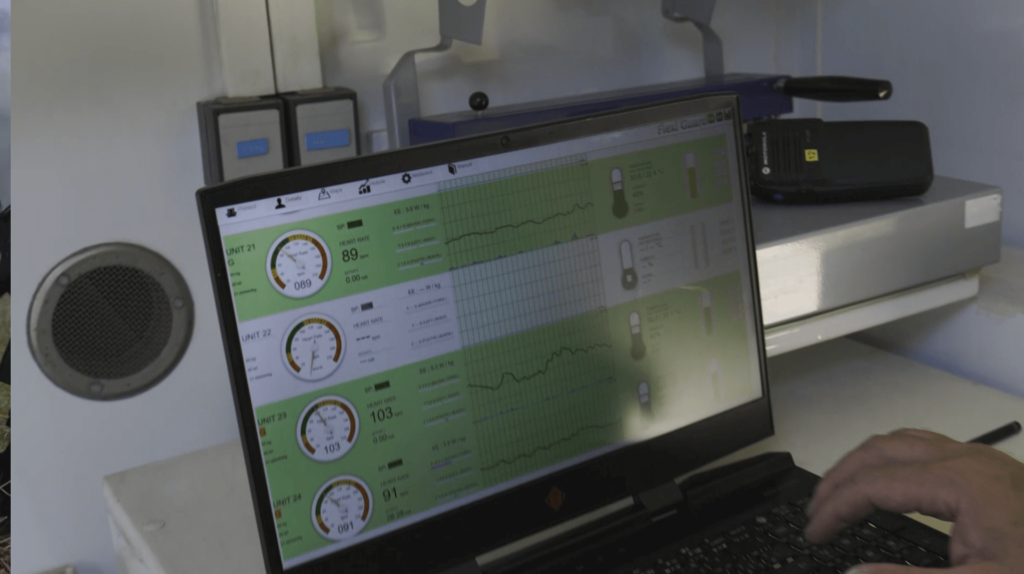
Martin Ukrop: Can you give a couple of examples of the projects you are working on with them? What is the intersection of software testing and doctors or the army in the field?
Miroslav Bureš: I can give you an example of a project we are preparing that can be used by firefighters and CBRN (Chemical, Biological, Radiological, Nuclear) units in the army. This project integrates the bits from previous projects and brings some innovations. If you have a first responder going into the field, you need situational awareness. We started talking to people with autonomous drones—such a drone can start from a vehicle coming to the scene and recon it automatically, so the people in the vehicle can see on a tablet what’s going on and prepare for the mission in advance. Otherwise, they must rely on just the textual description via some transmitter or phone.
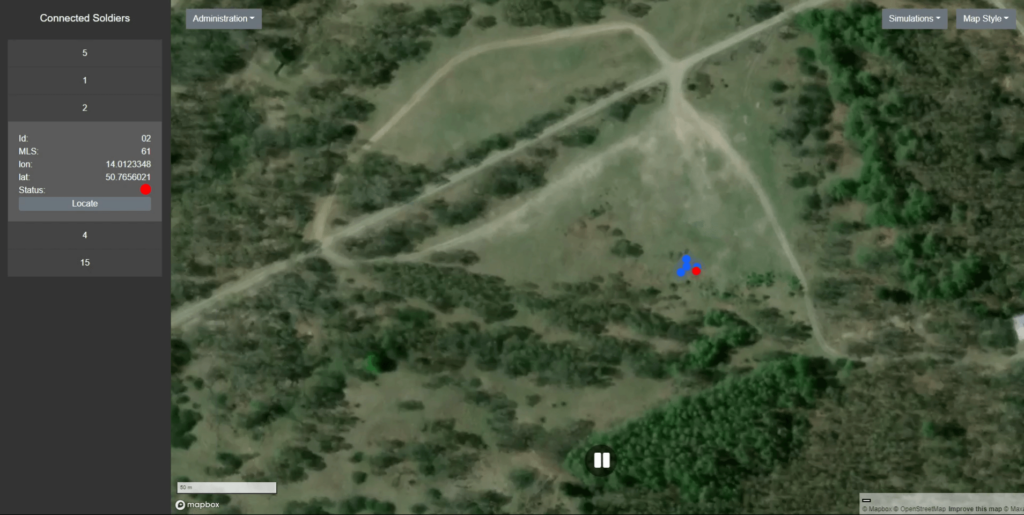
There’s also a second part to this, the body sensors. This technology is advancing rapidly: we already have smart textiles that are simply amazing. In 10 years, we will have really good gear that can collect data with almost medical accuracy so that you can monitor things related to a person’s health. So you can learn how a firefighter feels during a mission or how seriously a soldier is wounded. Even civilians can be given the sensors to monitor them before first responders arrive. The possibilities are great.
Another component is augmented reality. Here, we are doing some experiments to give first responders or military units the capability to see the position and status of their members through smoke or heavy terrain. It gives the unit a much better chance to react correctly and have the situational awareness to respond.
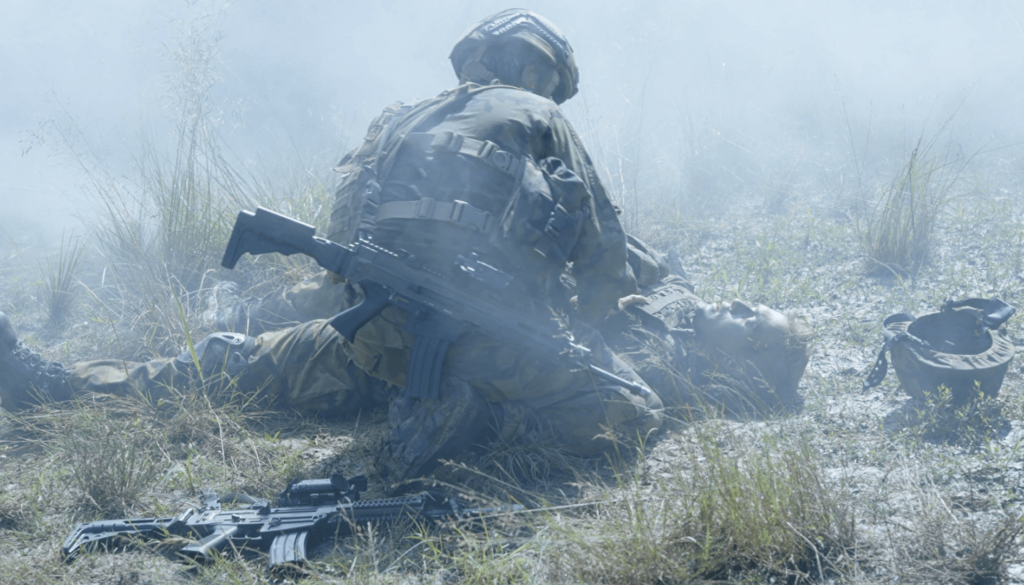
Martin Ukrop: That sounds like a very interesting mix from formal methods underlying advanced testing techniques to drones and body sensors, and through that to saving human lives.
Miroslav Bureš: Yes, it starts with some basic mathematics for AI and the construction of the systems and ends with concrete gear. It’s nice to be present for the whole lifecycle, end to end.
Martin Ukrop: Seeing the whole process, from the early design to the physical thing, is a very satisfying moment, especially in research, when one often does things that can take years and years until application and production.
Miroslav Bureš: Yes, this is not just hype—like AI hype or IoT hype. This is the actual capability to make dangerous work safer and more effective.
Martin Ukrop: Last question: where do you see yourself in the next 10 years? Are there any goals that you would like to achieve? What does the future hold?
See also Miroslav Bureš’s article “Testing critical IoT systems to mitigate network disruptions” in RHRQ February 2023 for more on this research.
Miroslav Bureš: We focus on two streams. The first is a new subfield of system testing mathematics, which we call constrained path-based testing. We believe that this new style of system-testing mathematics will guide people through testing situations more effectively. The second thing is to go further with the medical and rescue missions research. We want to develop more capabilities and power for these systems. It’s the future, from my view of things.
Ten years from now, honestly, I cannot say. Research is an adventure. When we find something more useful, we will go for it.
Martin Ukrop: Thank you for the interview. We wish you a very interesting and engaging adventure in the upcoming 10 years!
SHARE THIS ARTICLE
More like this
Václav Matyáš, Professor with the Centre for Research on Cryptography and Security at the Faculty of Informatics at Masaryk University.
Sanjay Arora is a data scientist at Red Hat and a member of the Greater Boston Research Interest Group with particular interests in AI and machine learning. For RHRQ he interviewed Kate Saenko, a faculty member at Boston University and consulting professor for the MIT-IBM Watson AI Lab, about managing bias in machine learning datasets and the problems that remain unsolved.
We spoke about the importance of data sharing and privacy preservation, in both scientific and computer technology domains, with James Honaker and Mercè Crosas, two of Harvard’s leaders in these fields.
Research Director and RIG leader for Israel Idan Levi speaks with Anat Bremler-Barr, Professor in the School of Computer Science and Vice Dean of the Efi Arazi School of Computer Science at the Interdisciplinary Center, Herzliya, Israel (IDC).
We invited Red Hat Principal Kernel Engineer Toke Høiland-Jørgensen to interview Anna Brunström, currently a Full Professor and Research Manager for the Distributed Systems and Communications Research Group at Karlstad University, Sweden. Prof. Brunström has a background in distributed systems, but her main area of work over the last years has been in computer networking. Their wide-ranging conversation covers programmable networking, open data, diversity in IT fields, and more.
Red Hat Research University Program Manager Matej Hrušovský interviewed Barbora Buhnová, Associate Professor and Vice Dean for industrial partners at Masaryk University, Faculty of Informatics in Brno, Czech Republic. She is also the chair of the Association of Industrial Partners of Masaryk University, Faculty of Informatics, and is a co-founding and governing board member of […]
Dr. Michael Zink is Professor of Electrical and Computer Engineering at the University of Massachusetts, Amherst. In addition to publishing and teaching, Dr. Zink has participated in several projects providing distributed systems and virtual networks for research and education, including GENI and ExoGENI (2007-2021), Cloud Lab (2014-2021), and now the Open Cloud Testbed (OCT) since […]
RHRQ asked Professor Ayse Coskun of the Electrical and Computer Engineering Department at Boston University to sit down for an interview with Red Hatter Marcel Hild. Professor Coskun is one of the Principal Investigators on the project AI for Cloud Ops, which recently won a $1 million Red Hat Collaboratory Research Incubation Award. Their conversation […]
RHRQ asked Brno research manager Matej Hrušovský and Red Hat quality assurance engineer Pavel Tišnovský to talk with long-time collaborator Tomáš Černý, a native of the Czech Republic now teaching at Baylor University in Waco, Texas. Prof. Černý was in Brno recently as part of his highly successful student research initiative, which brings Baylor students […]
